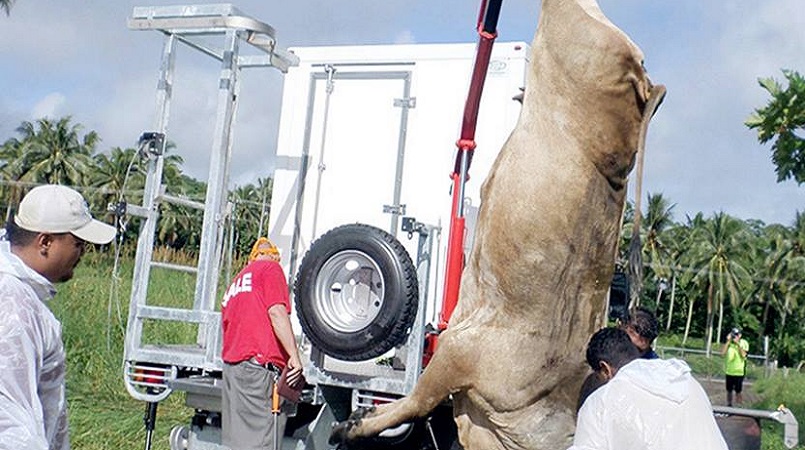
Negotiations between the World Bank and the Government of Samoa to fund a permanent abattoir are expected to be finalized in the near future.
Minister of Agriculture and Fisheries, Laaulialemalietoa Leuatea Polataivao Schmidt said tentatively, the construction of the abattoir at Nu’u should start before the end of the year.
“$3 million tala from the World Bank is allocated for the Central Abattoir. The facility when completed will take over the processing of all meat products, from poultry, pigs, cattle and lambs before they can be sold commercially,” he said in a release from the Ministry of the Prime Minister and Cabinet.
“Any meat which will not be processed by the Central Abattoir is banned from the commercial market here and abroad. Ultimately, the main component of the project is also to revive our meat export.”
“So far, our markets are restricted in the region with Cook Islands and Tonga as two of our main outlets but we want to enter the lucrative outlets in the United States via American Samoa,” said Laaulialemalietoa.
Initially two mobile abattoirs have been combing the cattle farms slaughtering and processing the animals.
While some bigger farms have abattoir facilities, most don't and Laaulialemalietoa says there is a need for greater control for health reasons.
With 70% of beef currently being imported into Samoa, there is a huge opportunity for local farmers to enter the market as commercial sellers.
With that in mind, the World Bank and the Samoan Ministry of Agriculture and Fisheries have been working with the Ministry of Agriculture and Fisheries through the Samoa Agriculture Competitiveness Enhancement Project (SACEP) since July 2012.
Its goal is to support livestock producers and fruit and vegetable growers improve their productivity and take greater advantage of market opportunities.
“Now in its third year, the project– with the close support of the Small Business Enterprise Centre and the Development Bank of Samoa – has approved grant financing of approximately SAT $2.5 million (US$316,500) for 172 livestock farmers to upgrade their pastures and facilities and increase their herds.
The training on improved husbandry practices already appears to be making a difference, with provisional results seeing the calving rate increase from 48% at the start of the project to 64%,” says a report published by the World Bank.
Photo by MPMC
